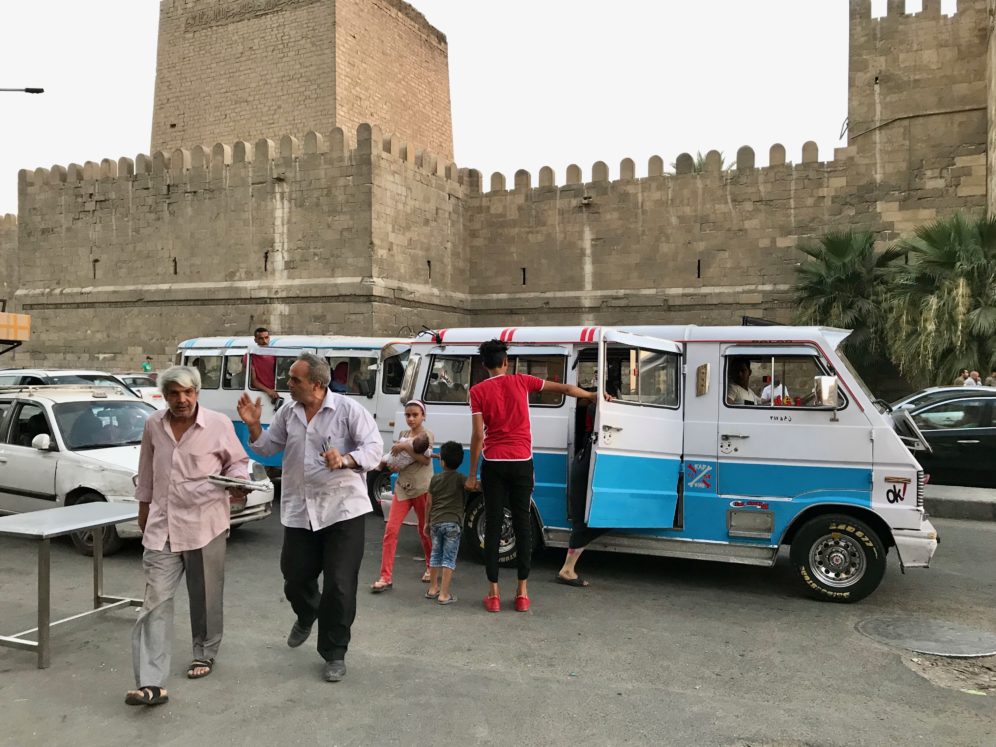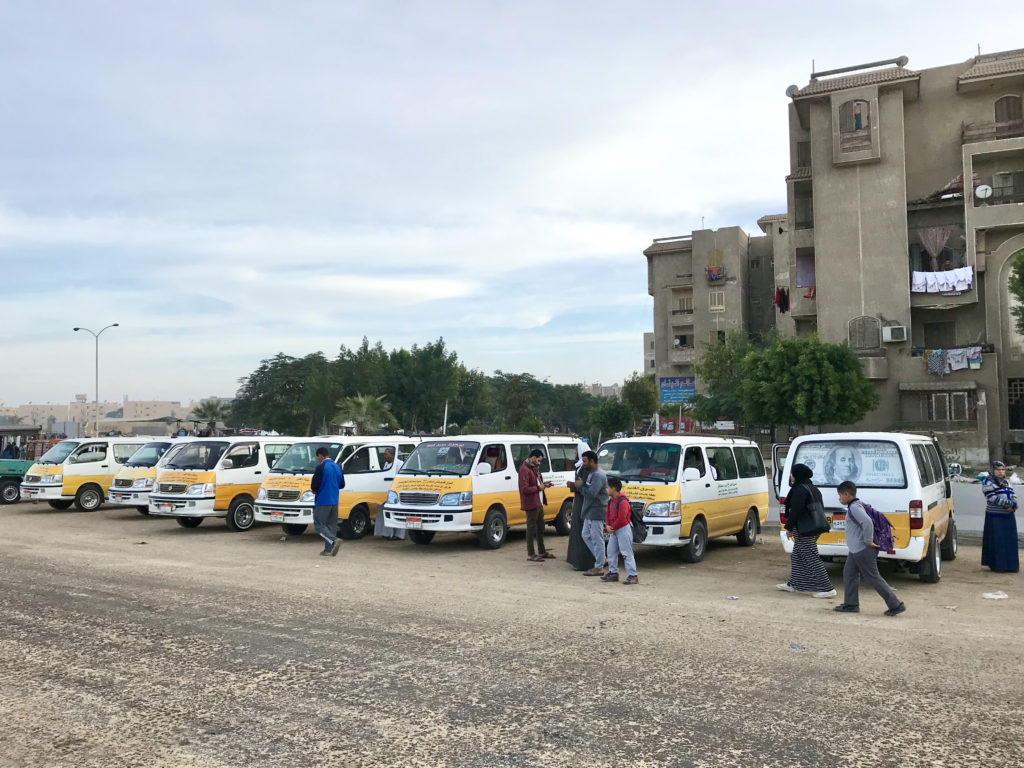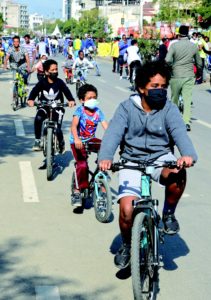 Public transport vans in Cairo, Egypt.
Public transport vans in Cairo, Egypt.
March 29, 2021
Africa in Transition: Improving Urban Mobility Amid the COVID-19 Pandemic
Before COVID19, African cities were grappling with rising urban populations and inadequate transport infrastructure. While the pandemic has exposed these vulnerabilities, regional governments are seizing the opportunity to build smarter and more resilient cities.
GREATER CAIRO, EGYPT
In February 2020, Egypt became the first African country to report a coronavirus case. By May, the government’s control measures included a complete halt to public transport operations during the Eid al-Fitr week and an extended nighttime curfew. These measures resulted in a drop in ridership. Mwasalat Misr, one of Cairo’s private bus operators, reported a 55 percent decrease in ridership compared to the same period in 2019. High operational costs are threatening the sustainability of Mwasalat Misr and other Cairo-based bus companies. To reduce operational expenses, Mwasalat Misr has deployed smaller capacity buses at higher frequencies. The company is also offering discounts on digital payments to minimize cash exchanges. The government is facilitating the restructuring of loan agreements, taxes, and service fees to ensure that all public transport services remain in operation.

Nairobi, Kenya

In Kenya, several cashless payment systems were previously abandoned due to strong opposition by matatu (minibus taxi) operators. In response to the COVID-19 pandemic, the National Transport and Safety Authority (NTSA) plans to initiate a mandatory cashless payment platform for all public service vehicles. The platform will be linked to mobile money and is expected to be a catalyst towards the modernization of the public transport sector in Kenya.Today, the NTSA is encouraging informal operators to implement employment contracts that are compliant with labor laws, which mandate the inclusion of pensions, health insurance, and workplace safety. The reforms are expected to improve road safety and adherence to COVID-19 restrictions, like vehicle capacity, since drivers will no longer need to rush to hit unrealistic revenue targets set by vehicle owners.
Addis Ababa, Ethiopia

In neighboring Ethiopia, the Addis Ababa City Administration is upgrading its bus fleet and improving its public transport in anticipation of the first-phase of its bus rapid transit (BRT) system. During the pandemic, the city has faced inadequate bus services and longer wait times due to lower bus occupancies because of social distancing requirements, especially during peak hours. The city hopes the additional fleet of BRT will improve its capacity and resilience. Ethiopia’s recent reforms include the launch of an ITDP supported, national Non-Motorized Transport Strategy implemented through monthly car-free days and investments in walking and cycling infrastructure. Addis Ababa also hopes to spearhead a vibrant cycling culture by implementing a bike-share system. As the pandemic highlights the importance of walking and cycling as safe modes of transportation, the city is developing plans for protected bike lanes and footpaths along several corridors.
Kampala, Uganda
The Ugandan government enforced one of the region’s most stringent COVID-19 control measures, with a lockdown that halted public transport for nearly three months. This left walking and cycling as the only mobility options for those who did not own private cars. The Kampala Capital City Authority (KCCA) took advantage of this opportunity to reorganize the public transport sector and improve the city’s infrastructure, including an upgrade of the massive Old Taxi Park in the city center. When the lockdown was lifted, KCCA imposed regulations on boda bodas and public transport minibuses (known locally as taxis). Each minibus taxi was required to re-register and assigned a specific route. This helped curb the virus and reduce the chaos and haphazard public transport staging in Kampala.The restrictions on public transport during the lockdown demonstrated the need for better walking and cycling infrastructure in Kampala. Government agencies are now incorporating walking and cycling facilities into road projects. The 2019 conversion of the 2-kilometer Namirembe Road and Luwum Street into a non-motorized transport corridor received positive feedback, and the city plans to embark on similar projects.

Kigali, Rwanda

The Kigali bus system represents one of the best public transport transformations in Africa. The city’s formal public transport system is operated by three bus companies under contract with the Rwanda Utilities Regulatory Authority. The companies have salaried employees and operate high-capacity buses. Passengers pay fares through smart card technology, which has improved revenue and ticketing efficiency, and has minimized the physical contact and cash exchange during the pandemic. In addition, the largest bus operator, the Rwanda Federation of Transport Cooperatives, is an association of former private minibus owners. The efficiency of this formal system is a model for other cities. Despite its strong system, pandemic-related social distancing measures have led to operational challenges. Incidents of scrambling for buses were initially reported, due to the fifty-percent occupancy limit for passengers. Recently, the government allowed operators to return to full occupancy of seats and fifty percent occupancy for standees, to meet passenger demand.
Although COVID-19 infections have spread more slowly than expected in Africa, prevention measures have compounded the complex challenges faced by urban mobility systems across the region. The pandemic has highlighted the need for improved non-motorized transport infrastructure, better structure and management of the public transport industry, and the adoption of digital platforms. Ongoing reforms, some of which were initiated prior to the pandemic, have taken on new importance. The region is poised to emerge from COVID-19 with the infrastructure and public-private partnerships that will support a more resilient mobility system.
